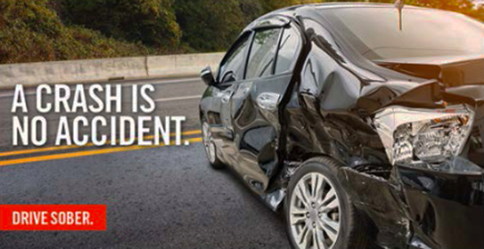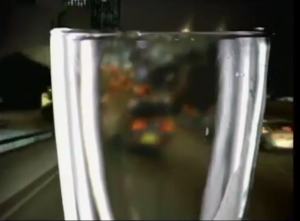Lesson Two: Driving Under the Influence (8.2)
 Driving under the influence is when a person drives any vehicle on any premises open to the public, while impaired by or under the influence of intoxicating liquor, cannabis, a controlled substance or inhalant, or any combination of the above.
Driving under the influence is when a person drives any vehicle on any premises open to the public, while impaired by or under the influence of intoxicating liquor, cannabis, a controlled substance or inhalant, or any combination of the above.
 ODOT – Under The Influence
ODOT – Under The Influence
 Under The Influence
Under The Influence
Alcohol
Alcohol is a substance that reduces the function of the brain. Alcohol impairs thinking, reasoning, and muscle coordination. These are all essential for safe vehicle operation. Alcohol first affects your judgment and reasoning. It then slows your reaction time, motor coordination and your vision becomes blurred. Alcohol level is measured by the weight of the alcohol in a certain volume of blood. This is called Blood Alcohol Concentration, or BAC. As BAC increases, your crash risk increases. Even a small amount of alcohol can affect judgement, reasoning, and driving coordination.
Implied Consent Law states that anyone who receives a driver license automatically consents to be tested for blood-alcohol content and other drugs if they are stopped for suspicion of drug or alcohol use while driving.
 MADD PSA
MADD PSA
Cannabis
Cannabis impairs motor skills, lane tracking, and cognitive functions. Cannabis also delays your reactions to sights and sounds, judging distances, timing, multi-tasking, and coordination. Mixing drugs and alcohol increases the danger of operating a vehicle.
 Marijuana
Marijuana
Illegal Substances
Illegal substances alters behavior and impairs cognitive function. Some substances, such as cannabis, can slow can your movements and reaction times while others, such as cocaine and methamphetamine, can make drivers more aggressive and reckless. Operating a motor vehicle while under the influence of any drug can result in crashes, injuries, and even fatalities.
Medications
Some prescription and over-the-counter medicines can cause extreme drowsiness, dizziness, and other side effects. Read and follow all warning labels before driving and note that warnings against “operating heavy machinery” include driving a vehicle.
It is difficult to accurately assess one’s impairment. Driving under the influence with any substance, legal or illegal, puts you and others in harm’s way. Using two or more drugs at the same time, including alcohol, can amplify the impairing effects of each drug a person has consumed.
Do not drive impaired! There many options for getting a ride at your fingertips. Ride sharing apps such as Uber and Lyft are alternatives to driving impaired. If that is not an option, call a trusted friend or adult to pick you up.

You must have a plan to respond to someone who is going to drive under the influence. Impaired people can be very confrontational. Call 911 or 24DRUNK (800-243-7865) to report an impaired driver. Be prepared to supply the license plate number or vehicle description and location. Do not accept a ride from anyone who you suspect is impaired. If you need to arrange a ride home, do you have someone that you can text or call?
Possession and or consumption of any intoxicant by a minor is strictly prohibited by law.
Oregon is a zero tolerance state for minors. Driving while under the influence of any level of any substance is a violation of this law and can result in a DUII charge.
Essential Questions
-
What is driving under the influence?
-
What are some reasons you don’t drink and drive?
-
What is the law pertaining to and consequences of driving under the influence?
By driving a vehicle, you have agreed to submit to chemical tests of your breath, blood, or urine to determine alcohol or drug content, if asked to do so by law enforcement.